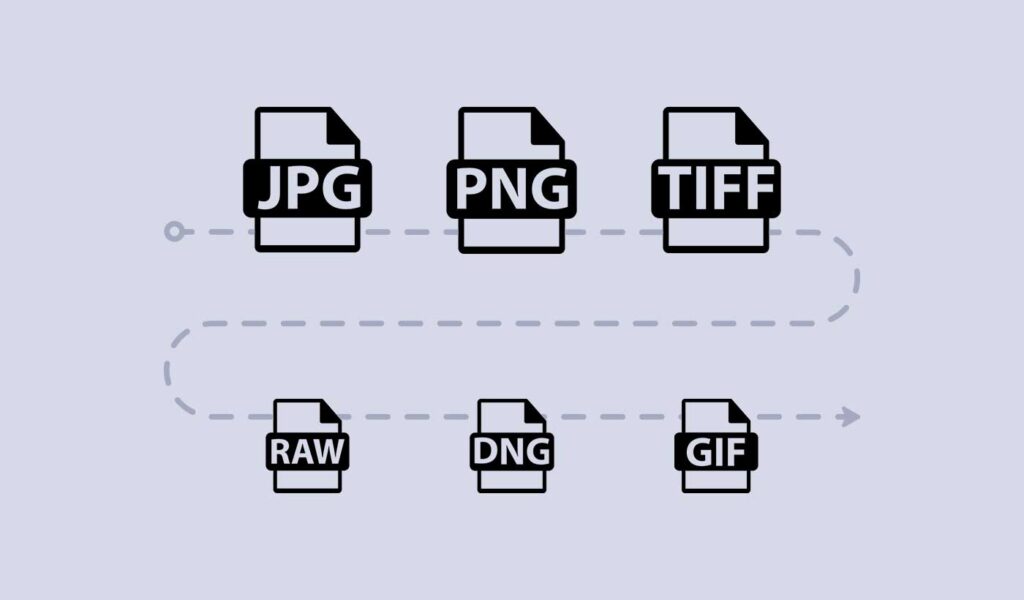How to create a digital photo archive
In a world where digital photo albums and social media have made photo-sharing ubiquitous (with all your digital photos scattered across devices and cloud locations), it’s more important than ever to have a solid photo archive.
Not only will a photo archive help you keep your memories organized and accessible, but it can also provide you with peace of mind knowing that your photos are safe and backed up.
Professional photographers go a step further with digital asset management (DAM), a system to process, store, organize, and add information to images. “This can be totally ad hoc, or it can be a highly organized process,” says Peter Krogh, who literally wrote the book on DAM. “Everyone has some type of DAM. It’s like marketing. If you don’t have a conscious marketing strategy, then no strategy is your strategy.”
These steps will get you from no strategy for managing your photos to a robust, well-backed-up system that will stand the test of time.
What is a photo archive?
A digital photo archive is a collection of digital images stored and organized for safekeeping and easy access. Whether it’s filled with quick snaps from your phone, scans of old film negatives, or terabyte-loads of professional DSLR images, a proper photo archive is essential for keeping track of and preserving all of your best shots.
Whether you’re a professional photographer or a godparent wanting to document every milestone for the next generation, a great system is necessary for the shareability, profitability, and longevity of your photography. Krogh explains: “If you lose the images due to human error or machine failure, it could be very costly. And if you have them, but can’t find them, you can lose many hours of productivity.”
There are many great reasons for archiving digital photos—and almost as many ways to go about doing so. We’ll help you find the best approach based on your needs, resources, and image library. Plus, we’ll go over the best ways to get it done as painlessly and efficiently as possible.
Trust us. You’ll be glad you did it—and did it right.
Why create a photo archive?
Let’s start with the biggest reason: Your photography has value. It might be how you remember the most important moments in your life or how you make a living. A digital photo archive preserves that value, and the photos themselves, and can even become a valuable tool in its own right.
If you’re a professional, a well-organized photo archive is essential to your trade. When you can find any photo you’ve ever taken in a heartbeat, you can take advantage of more opportunities to license work for commercial clients. And when you’re looking to build custom portfolios for new jobs, you’ll have everything you need just a few clicks away.
In fact, for professional photographers with a DAM, “making good use of metadata, like keywords, copyright and contact information, licensing restrictions, and other information add value to your image collection beyond just the workflow,” says Krogh. “It helps you to better understand who you are as a photographer, and to present your work cohesively.”
If you’re not a professional, every single other benefit of a photo archive applies to you. Your photos will be safe from damage or loss, easier to revisit, and simpler to share (or turn into a photo book!). If you can think of more than one photo you’d be devastated to lose, you should probably start a digital photo archive for your personal collections.
Building your photo archive
Whatever your reasons for achieving digital photos—whether that’s saving memories for family members, preserving important papers for the next generation, or simply making your everyday life as a photographer easier—we’ll help you build one. We’ll walk through how to do a photo inventory, figure out file name conventions, and store your selected photos safely to avoid data loss.
Krogh has three top photo archive tips, which we’ll get into in much deeper detail below:
- Set up good storage and backup processes.
- Use a catalog to manage your collection.
- Centralize and consolidate your work.

Collect your photos
Krogh’s third tip is our first step: Identifying and collecting the photos you want to archive. It probably sounds obvious, but this step can range from simple to challenging.
If you’ve already got all of your photos on one hard drive or computer, you’re done! But if your collection spreads across laptops, loose memory cards, and shoeboxes, you’ll want to get all those images in one place before diving into creating the archive. Don’t forget old devices you’ve got stored away. You may find some forgotten, dusty digital gems hiding within.
“Managing images that are spread across many devices is much harder than stuff which is in a centralized location, states Krogh. “You can now get an 18 TB hard drive for less than $500—use a small number of large devices (all properly backed up), and you can make the image management problem easier to solve.”
Organize your files
When all those photos are collected, think about how you’ll organize the photos. Starting with folders organized by date (days, months, or years) is a common, straightforward practice, but you may find other approaches more suitable to how you think or how you work.
Pros might group photos by job or client. If you’ve been collecting pictures from many sources (cameras, phones, the aforementioned shoeboxes), carrying that structure over into your digital archive might be helpful.
Whatever organizational system you find intuitive and compatible with your collection is the right one. Just be sure to use that structure consistently.
You’ll also want a tool to help you with this organization. Krogh calls that tool a catalog or a database that saves information about your images and helps to manage them. Having a single location and way to organize everything is essential for good file management and consistent tagging. “Right now, Adobe Lightroom Classic is the best game in town,” states Krogh. “I’d love to have others to recommend, but they really are nowhere near Lightroom’s capabilities.”
Pick your favorites
This is usually the most fun (and potentially most time-consuming) step in making a photo archive. There’s very little reason not to archive every image for safekeeping in the digital age, and you should. However, your truly excellent shots can get lost in that avalanche of data.
If you’re going through the effort of properly archiving your photos, it’s well worth selecting and giving special attention to the ones most important to you. So, however your photos are organized, choose a way to set aside your selects—those best-of-the-best shots that stand out from the rest in any given set because of their quality or their significance.
This could mean creating separate folders for them, giving them particular filenames, editing the file’s metadata, or otherwise marking them in a way that’s easy for you to see and search.
As you’re picking your favorites, it’s a good idea to also add metadata entry. “If you learn how to use the tools, adding metadata does not have to be time-consuming,” says Krogh. “As a matter of fact, it should help save time in the short term, as well as the long term.”
If you’re a pro, you should embed your contact and copyright information, which helps your clients know the source and ownership of images as they flow through production. If you add in some basic information like the general subject matter, location, and client name (no need for 50 separate keywords)—you’ll be able to find your work much faster.

Know your formats
There are literally hundreds of digital image formats, and if your photos come from more than one device (or more than one decade), your files are probably a mix of several file types. Generally speaking, you want to archive the highest-quality versions of each photo.
Krogh notes that understanding digital image technology is one of the most useful things you can do if you’re a professional photographer. “As a film photographer, it was important to know how film and chemistry worked together, even when you didn’t do your own lab work,” he says. “As a digital photographer, you are responsible for a lot of technical stuff, and you should try to understand it.”
That means the way color management works, what different file formats offer, and what type of metadata is passed between applications. While no one can be an expert in all things digital, “digital imaging should not be a black box of mystery to you if you are using it to make your living,” says Krogh. “It’s an incremental process, and it’s essential to keep learning.”
We won’t go into the specifics of every digital format here, but for our purposes, the best practice is to archive uncompressed, full-resolution originals. Uncompressed formats like RAW and DNG preserve every pixel-perfect detail and are usually the default for high-end photography gear.
Other standard formats like JPEGs, TIFFs, and PNGs often sacrifice some of those details to save storage space. If you’ve got uncompressed files, mark those for archiving. You can always create additional compressed copies when storage or bandwidth is at a premium.
If you’ve got multiple copies of the same image, now’s also a good time to make sure you’re archiving the highest-quality copy. For instance, the file you’ve synced directly from your phone’s camera roll to your computer should go into the archive over a screenshot or a copy you’ve pulled from an email.
Keep in mind: making copies of image files on your computer doesn’t degrade the image quality, but every time an image file is resized or recompressed, it loses some crucial data. You can likely tell you’re keeping the correct version visually or by file type. You can also use the file properties and metadata to confirm that it’s the original by finding the earliest date or highest pixel count.
Pro tip on storage and backup
Storage and backup can get pretty complicated pretty fast, and that’s why Krogh invented the 3-2-1 rule to simplify:
- For any data you want to keep, you need at least 3 copies.
- Ideally, there should be 2 different media types, like a copy on a hard drive and also in the cloud.
- Store 1 of these copies offsite. In the olden days, this usually meant carrying a hard drive or a box of hard drives offsite. It’s now possible to have a cloud backup that serves as both the second media type and the offsite.

Choose your local storage
Depending on how many photos are in your archive, all your digital files might fit on a single USB flash drive or span multiple external hard drives. If it’s the former, you’ve probably already got what you need to create a local (meaning offline) copy of your photo archive. If it’s closer to the latter, you may need to look into some new storage to dedicate to this project.
While you can store your archive on your computer’s primary storage drive (desktop), we recommend you build your archive to outlast that computer. You’ll certainly want at least one copy (and backups, which we’ll cover here) that lives on separate external storage like a USB hard drive. When you’re just starting your image archive, you’ll want to choose a drive that can fit everything you want to archive and accommodate more years of taking and saving great photos. A good rule is to buy storage for at least twice the data you presently need to store.
Professional photographers who need frequent, fast access to their files should consider a RAID solution. Put very simply, RAID solutions index files in a way that allows them to span multiple drives. They also can include built-in redundancies to protect files in case of corruption or drive failure. Of course, the cost and complexity vary wildly with size and digital storage media, but many reasonably priced consumer options require virtually no technical savvy to get up and running.
If you’re a pro, you can also benefit from digital asset management (DAM) tools that automate the organization and backup of your files. DAMs can range from simple software that manages your local files to online services that regularly sync your RAID drives to offsite cloud storage. Let’s get into the latter next!
Consider online storage
Storing your photos online doesn’t just provide convenient access from anywhere. It’s also a fantastic—borderline essential—way to protect your data from loss or destruction. The options are many, from mainstream photo-first options with limited free storage like iCloud (which you can easily use to create books from your iPhone) to high-capacity DAM-integrated subscription services that accommodate all types of data. (On that note, keep in mind that some platforms support a limited selection of image formats. So make sure the one you choose is compatible with the file types you’ll be archiving.)
Another advantage of some online storage options is the ability to automate your uploads, so your archive is always kept up to date and in sync with your local copies.
Always be backing up
We’ll say that again: Always be backing up.
A digital photo archive protects your photos. Backups protect your archive. Wherever and however you’re storing your newly organized files, you’ll want to make at least one extra copy of the entire thing. That could mean creating an additional backup on an external drive, a duplicate in the cloud, or both, plus some more.
“The most common mistake I see is failure to keep updated backups,” says Krogh. “It breaks my heart when photographers lose an assignment or years’ worth of work.”
You really can’t be too careful with something as innately valuable and irreplicable as your photos; we’d also strongly advise keeping at least one copy in another physical location, be it at the office, a friend’s house, or even a safe deposit box. Then, if disaster strikes in one location, you’ll have an intact backup somewhere else.
Pro tip: You’ll want to regularly update your backup(s) as you add more files to your archive. You can do that manually, or with an always-connected storage medium that automatically backs up new images.
Also, remember that storage hardware doesn’t last forever. So you may want to consider migrating your backup copies to new drives every five years or so. We know that’s not fun from personal experience, but you’ll likely be glad you did.

Got all that?
Yes, it’s an undertaking. But creating a digital photo archive is something just about everyone should do, and it’s totally manageable if you start simply and establish a routine. The benefits to professionals can and will be measured in dollars. And the benefits to everyone are immeasurable because your photos are fantastic and should be around forever.
Got more questions? Watch our online event with DAM expert Peter Krogh and Blurb evangelist Dan Milnor all about getting your photos archived and organized!

